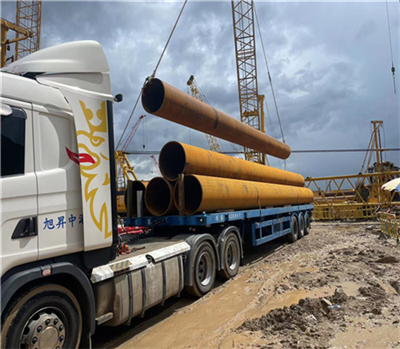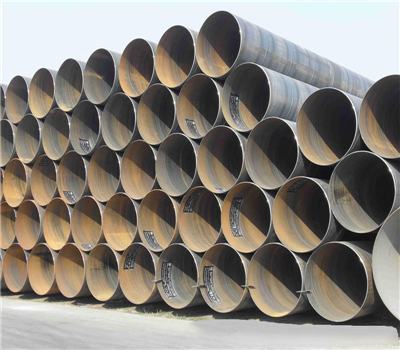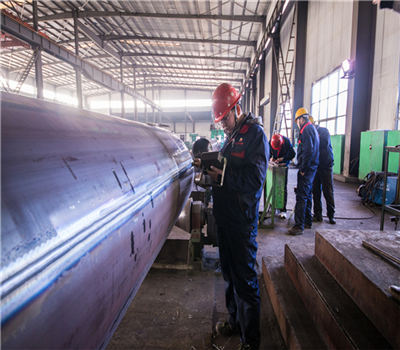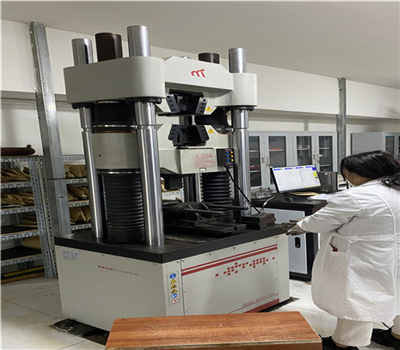Pipeline steel is a type of steel used to manufacture oil and gas pipeline transportation systems.As a long-distance transportation tool for oil and natural gas, the pipeline system has the advantages of economy, safety and uninterrupted.

Pipeline steel application
Pipeline steel product forms include seamless steel pipes and welded steel pipes,which can be divided into three categories: alpine, high-sulfur areas and seabed laying.These pipelines with harsh working environment have long lines and are not easy to maintain, and have strict quality requirements.
The many challenges faced by pipeline steel include: most of the oil and gas fields are located in polar regions, ice sheets, deserts, and ocean areas, and the natural conditions are relatively harsh; or in order to improve transportation efficiency, the diameter of the pipeline is constantly enlarged, and the delivery pressure is constantly increased.
Pipeline Steel Properties
From the comprehensive evaluation of the development trend of oil and gas pipelines, pipeline laying conditions, main failure modes and failure causes, pipeline steel should have good mechanical properties ( thick wall, high strength, high toughness, wear resistance), and should also have large diameter,It should also have large diameter, weldability, cold and low temperature resistance, corrosion resistance (CO2), resistance to seawater and HIC, SSCC performance, etc.
①High strength
Pipeline steel not only requires high tensile strength and yield strength, but also requires the yield ratio to be in the range of 0.85~0.93.
② High impact toughness
high impact toughness can meet the requirements of preventing cracking.
③Low ductile-brittle transition temperature
Harsh regions and climate conditions require pipeline steel to have a sufficiently low ductile-brittle transition temperature.The shear area of DWTT (Drop Weight Tear Test) has become the main control index to prevent brittle failure of pipelines.The general specification requires that the fracture shear area of the specimen be ≥85% at the lowest operating temperature.
④Excellent resistance to hydrogen-induced cracking (HIC) and sulfide stress corrosion cracking (SSCC)
⑤ Good welding performance
Good weldability of steel is very important to ensure the integrity and welding quality of the pipeline.

Pipeline Steel Standards
At present, the main technical standards of oil and gas transmission steel pipes used in my country include API 5L, DNV-OS-F101, ISO 3183, and GB/T 9711, etc. The general situation is as follows:
① API 5L (line pipe specification) is a widely adopted specification formulated by the Maine Petroleum Institute.
② DNV-OS-F101 (submarine pipeline system) is a specification specially formulated by Det Norske Veritas for submarine pipelines.
③ ISO 3183 is a standard formulated by the International Organization for Standardization on the delivery conditions of steel pipes for oil and gas transmission. This standard does not involve pipeline design and installation.
④ The latest version of GB/T 9711 is the 2017 version.This version is based on ISO 3183:2012 and API Spec 5L 45th Edition.based on both.In line with the two standards referenced, two product specification levels are specified: PSL1 and PSL2.PSL1 provides a standard quality level of line pipe; PSL2 adds mandatory requirements including chemical composition, notch toughness, strength properties and supplementary non-destructive testing (NDT).
API SPEC 5L and ISO 3183 are internationally influential line pipe specifications. In contrast, most oil companies in the world are accustomed to adopting API SPEC 5L specifications as the basic specification for pipeline steel pipe procurement.


Order information
The order contract for pipeline steel should include the following information:
① Quantity (total mass or total quantity of steel pipes);
② Normative level (PSL1 or PSL2);
③ Steel pipe type (seamless or welded pipe, specific welding process, pipe end type);
④Based on standards, such as GB/T 9711-2017;
⑤ steel grade;
⑥Outer diameter and wall thickness;
⑦Length and length type (non-cut or cut);
⑧ Determine the need to use the appendix.
Steel pipe grades and steel grades (GB/T 9711-2017)
| Normative levelsteel | steel pipe grade | steel grade |
| PSL1 | L175 | A25 |
| L175P | A25P | |
| L210 | A | |
| L245 | B | |
| L290 | X42 | |
| L320 | X46 | |
| L360 | X52 | |
| L390 | X56 | |
| L415 | X60 | |
| L450 | X65 | |
| L485 | X70 | |
| PSL2 | L245R | BR |
| L290R | X42R | |
| L245N | BN | |
| L290N | X42N | |
| L320N | X46N | |
| L360N | X52N | |
| L390N | X56N | |
| L415N | X60N | |
| L245Q | BQ | |
| L290Q | X42Q | |
| L320Q | X46Q | |
| L360Q | X52Q | |
| L390Q | X56Q | |
| L415Q | X60Q | |
| L450Q | X65Q | |
| L485Q | X70Q | |
| L555Q | X80Q | |
| L625Q | X90Q | |
| L690Q | X100M | |
| L245M | BM | |
| L290M | X42M | |
| L320M | X46M | |
| L360M | X52M | |
| L390M | X56M | |
| L415M | X60M | |
| L450M | X65M | |
| L485M | X70M | |
| L555M | X80M | |
| L625M | X90M | |
| L690M | X100M | |
| L830M | X120M |
Post time: Jan-30-2023
